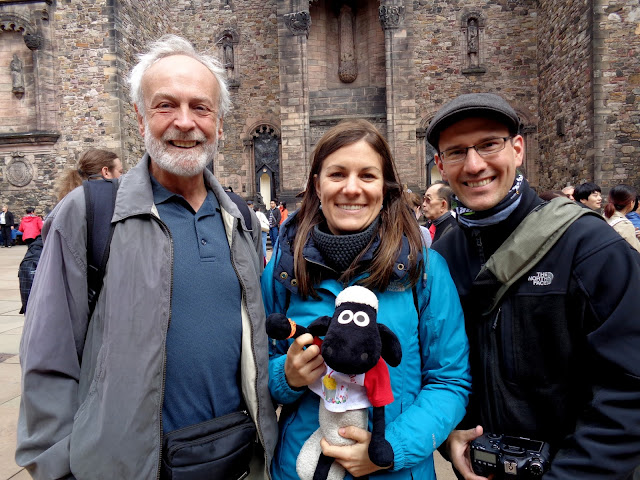We spent one day in Glasgow, taking the train from Stirling,
where we found a B&B that was much cheaper than those available in the
larger city. (I was disappointed in my
photos of Stirling. None really turned
out well, so I have left those out of the blog.) Glasgow was another story
entirely.
Our day in Glasgow was truly “Charles Rennie Macintosh Day,”
because our stay there involved an in-depth look at this seminal
architect/designer’s work. Part of the Arts and Crafts movement, Macintosh, and
his wife and collaborator, Margaret McDonald, created some marvelous designs,
but neither were successful in their lifetimes.
You can see some influences of Macintosh in the work of later architects
and designers, including Frank Lloyd Wright.
We began the day with a tour at the Glasgow School of
Art. Macintosh won the commission for
the school design in a competition when he was only a young draftsman at a
local architecture firm. The building
was constructed over a period of several years, and Macintosh changed the
design during the process, and the building shows the evolution of his work.
Sadly, the art school was badly damaged in a fire a couple
of years ago, but amazingly, the interior structure remains intact, so it is
being rebuilt. Much of the furniture and
wooden artifacts were lost, but because the building had recently been
digitally mapped, it can be restored. Work is progressing, but much more money
is needed. Some wealthy benefactors, including actor Brad Pitt, a Macintosh
fan, are helping to raise the funds required for the restoration.
Following our insightful tour, we lunched at the Willow Tea
Rooms, a recreation of a tearoom that Macintosh designed for a local socialite
in 1904. He even designed the
silverware for the original tearoom. The reconstruction offers only standard
restaurant flatware, but it was a treat to experience the ambiance of the
place.
 |
| Upstairs at the Willow Tea Rooms. (The photos of the tea rooms were taken early in the day. When we returned their for lunch, the place was packed!) |
 |
| The Willow Tea Rooms, recreated as they were back in the day. |
Our final stop was the House for an Art Lover, a 1901 design that
Macintosh, with Macdonald’s help, submitted to a competition. Neither he nor the other competitors won the
prize, because of some arcane rule that was not followed, but Macintosh was
singled out for recognition and received some prize money. In 1989-1996, the house was built to the design
that Macintosh and his wife had created.
Oh, what I would give to live in this house!
 |
| Chair designed by Macintosh. |
 |
| Light streams into the music room from the balcony. |
 |
| The piano in the music room. |
 |
| Ceiling detail from dining room. |
 |
| Wall panels built to Margaret's design. |
 |
| Close up of panel built to Margaret Macdonald's design. |











































